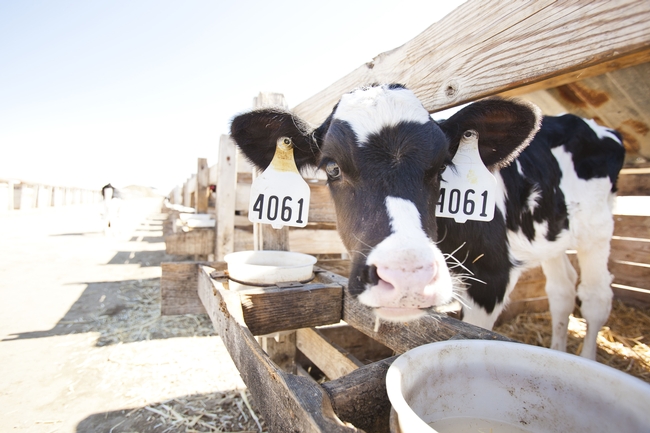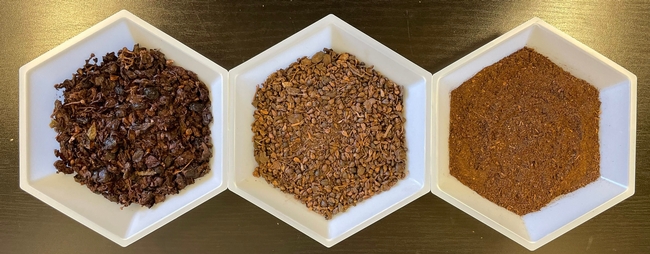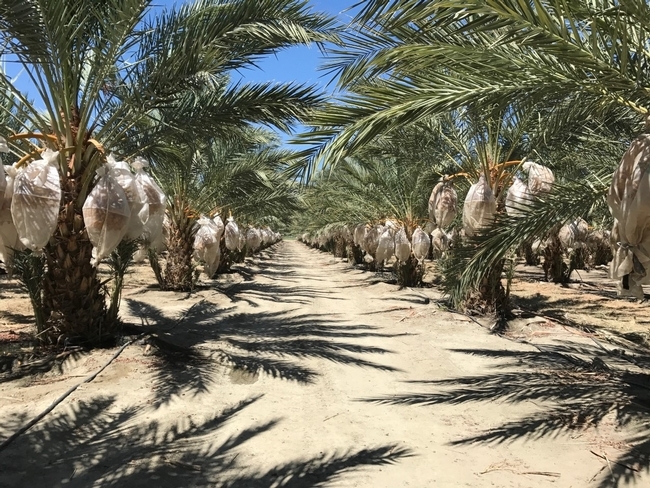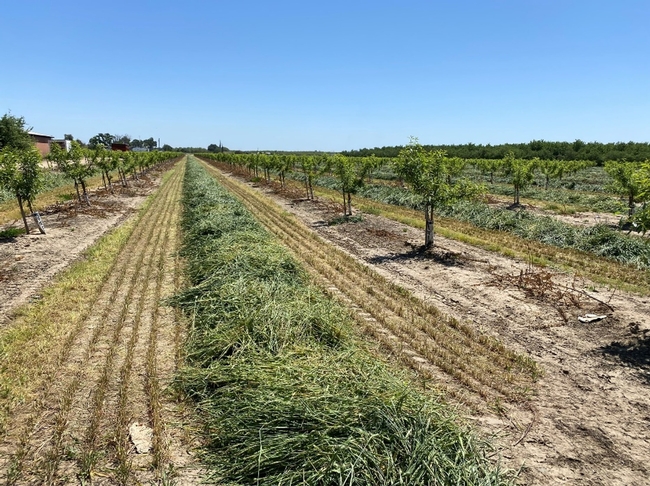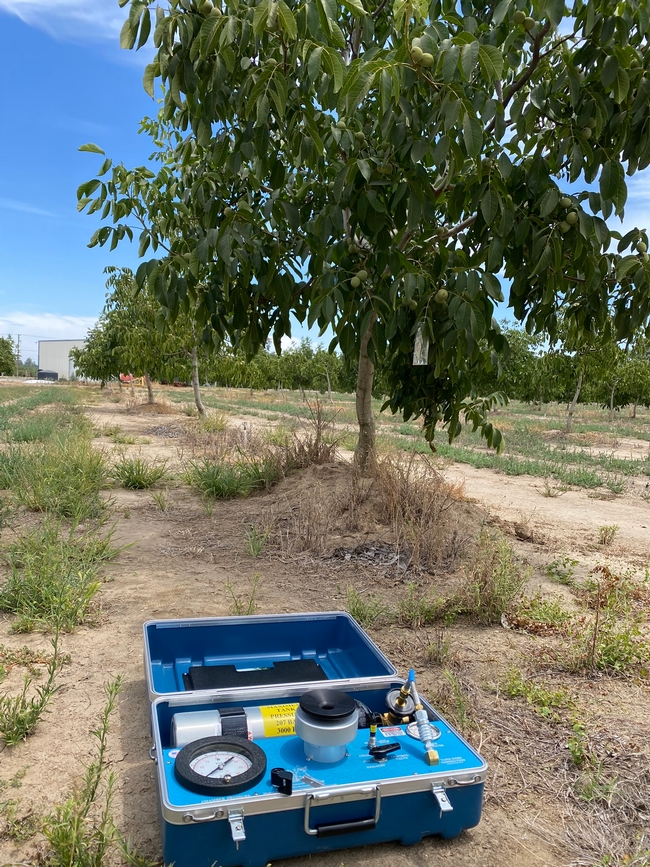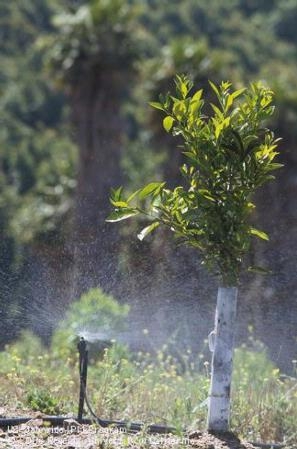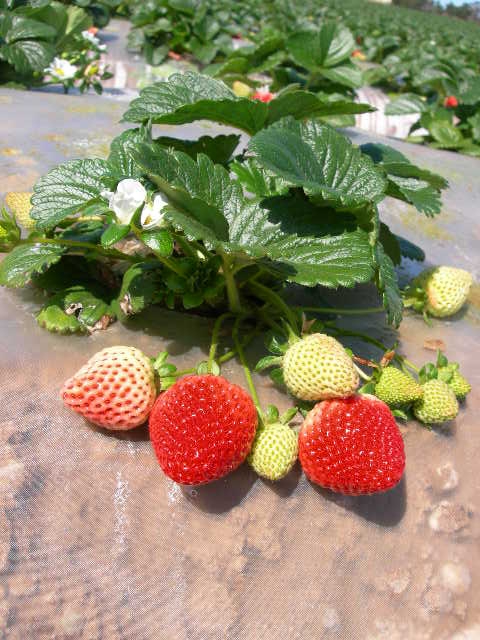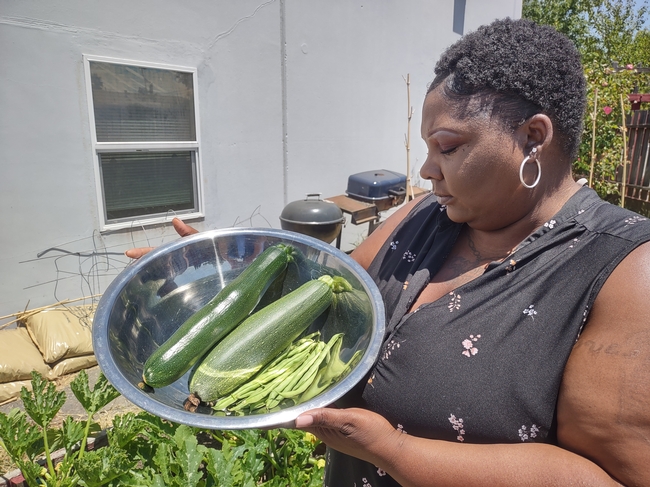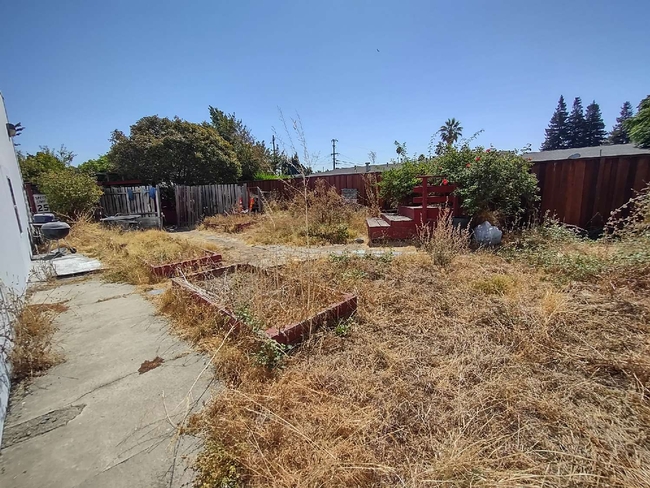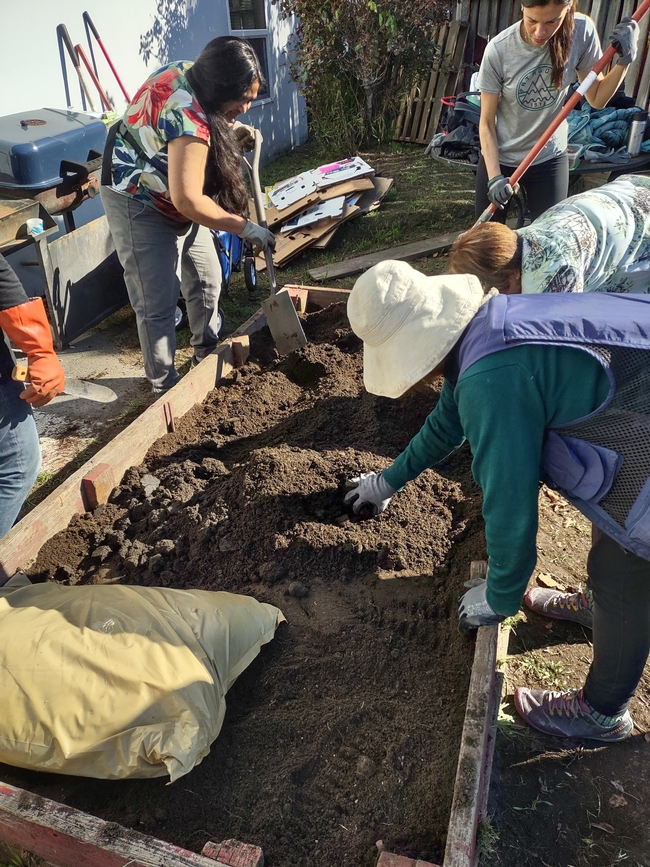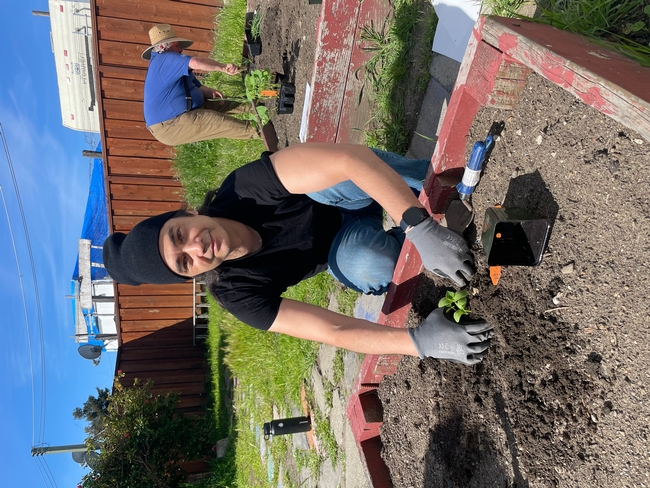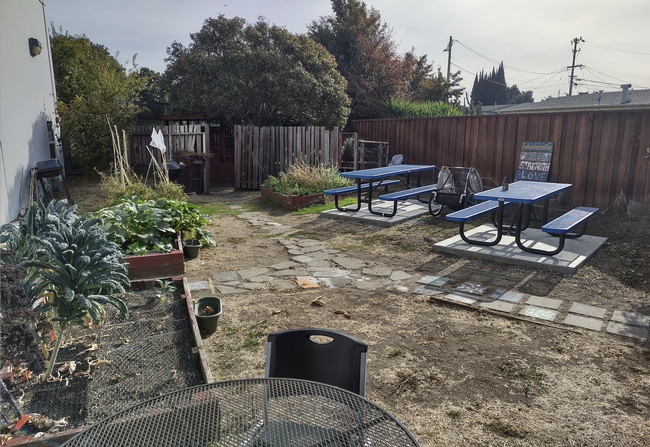UC Food Blog
Grape seeds, stems and skins can reduce dairy cattle emissions
Low-cost wine industry additive also improved feed efficiency and milk quality
Researchers at University of California, Davis, added fresh grape pomace left over from winemaking operations to alfalfa-based feed for dairy cows and found that methane emissions were reduced by 10% to 11%.
The preliminary findings could offer a low-cost sustainable pathway for vineyards to reduce waste while helping dairy operations maintain quality while cutting back on emissions of methane, which is a powerful greenhouse gas.
“This is the first time anybody has shown that this can work in California,” said Ermias Kebreab, an animal science professor and associate dean of global engagement at UC Davis. “You're reducing emissions, you're improving the quality and it may also reduce the cost of production.”
The pilot research project, which will be detailed in a paper later this year, also found that mixing in grape pomace improved feed efficiency and increased healthful fats, said Selina Wang, an associate professor of Cooperative Extension in small scale fruit and vegetable processing.
“We found that the feed with the additive of grape pomace changed the fatty acid composition of the milk and, in particular, increased the polyunsaturated fats, which are the main fats in grape pomace,” Wang said. “This suggests that supplementing the feed with an optimal fatty acid profile may have positive impact on the fatty acid profile of the milk and increase their health benefits.”
Symbiotic commodities?
In 2022, California was the leading dairy producer in the country, generating $10.40 billion in sales, while 90% of wine production came from the Golden State, with a market value of $5.54 billion.
Processing grapes for wine generates thousands of tons of waste in the form of grape pomace, which consists of leftover seeds, skins and stems. Dairy and livestock are responsible for more than half of the state's methane emissions, owed largely to cow burps.
They are the top two agricultural commodities in California, according to state production statistics, and reducing waste and emissions for both industries are key to the state meeting its climate goals.
Tannins for emission reductions
Wine grapes are high in fats and tannin, which is known to reduce methane emissions, so Kebreab sought to test if adding grape pomace to feed could have a positive effect while not adversely affecting production.
“It's a byproduct that's not being used much,” he said. “This is something that can be included in our efforts to try to reduce emissions.”
A mix of feed options
To do the research, scientists worked with Holstein dairy cows and gave the animals feed consisting of alfalfa, wheat, almond hulls, cottonseed and grain. After two weeks, the cows were split into three groups: A control group with no change in diet, another where the feed combination included 10% grape pomace and a third that received 15% grape pomace.
Every four weeks, the cow groups would change feed combinations.
They were fed twice daily by postdoctoral students and interns, and emissions were monitored daily. Milk production was documented in the morning and evening and milk samples were collected weekly to analyze for fat, protein, lactose and other measurements, which showed no differences between the control and other groups.
Methane and hydrogen emissions were reduced compared with the control group, suggesting that grape pomace reduced enteric emissions without affecting production.
“I think the dairy industry will be very interested in this,” Kebreab said. “Sometimes when you're using additives, they have palatability issues. With grape pomace, they absolutely love it.”
Next on the list is a trial with olive pomace and working to understand the mechanism that reduces emissions. “If we have a better understanding of the mechanisms, we can select the feed additive or a mix of feed additives to reduce dairy cattle emissions and make dairy milk healthier while making use of the agriculture byproducts,” Wang said. “There's a lot of room to grow in this space and we're excited about this work.”
The research was supported by the California Dairy Research Foundation.
This article was first published on the UC Davis news site.
AI and sustainable farming focus of May 7 workshop with UC, partners
On May 7, scientists from University of California, Riverside, UC Agriculture and Natural Resources, Colorado State University Extension, Kansas State University, University of Arizona, Central Arizona Project, and USDA-Agricultural Research Service will gather with growers in Palm Desert to discuss how artificial intelligence can be used in agriculture.
“Artificial intelligence can be used by farmers to save water, improve fertilizer efficiency and increase productivity,” said Khaled Bali, UC Cooperative Extension irrigation water management specialist and organizer of the workshop. “At this workshop, growers will hear about the latest research on AI technology for agriculture and about the experiences of growers who are already testing it in their fields.”
Speakers and topics will include:
- Raj Khosla, Kansas State University - AI for precision nitrogen and water management in row crops
- Michael Cahn, UC Cooperative Extension - CropManage decision support tool for irrigation and nutrient management
- Daniele Zaccaria, UC Cooperative Extension - Citrus crop water use and open ET in the low desert of California
- Nan Li, UC Riverside - Estimating soil moisture using remote-sensing and land surface parameters in the Central Valley of California.
- Ali Montazar, UC Cooperative Extension - Promises and pitfalls of drip irrigation in desert cropping systems
- Khaled Bali, UC Cooperative Extension - Deficit irrigation strategies for alfalfa in California
- Philip Waisen, UC Cooperative Extension - Environmentally conscious practices for managing soilborne diseases in low desert vegetable production
- Peter Moller, Rubicon Water - On-farm water conservation projects: surface irrigation
- Ronnie Leimgruber, Imperial Valley grower - On-farm water conservation projects: linear move, basin and subsurface drip irrigation
- Rick Benson, Imperial Valley grower - Alternative cropping systems for the low desert region of California: olives and other crops
The workshop will be held at the UCR Palm Desert Center at 75080 Frank Sinatra Drive in Palm Desertfrom 8 a.m. to 3 p.m. on May 7. It costs $30 per person and includes lunch. Register at https://bit.ly/AImay7.
Young orchard water and nutrient management workshops offered in Modesto, Merced, Fresno, Bakersfield
Growers invited to discuss young almonds, pistachios, walnuts, olives and citrus orchards starting May 9
To help growers manage irrigation and nutrients for young and immature orchards, UC Cooperative Extension is offering workshops in Modesto, Merced, Fresno and Bakersfield.
The workshops will feature presentations by various experts and researchers focusing on best irrigation and nutrient management practices tailored specifically for young orchards in the San Joaquin Valley. They will cover almonds, pistachios, walnuts, olives and citrus.
“Attendees will gain insights into the irrigation and nutrient needs of young orchards, which are different from those applicable to mature orchards, and learn strategies for adjusting these practices as orchards mature,” said Moneim Mohamed, UC Cooperative Extension irrigation and soils advisor for Stanislaus, San Joaquin and Merced counties. “This knowledge aims to ensure healthier tree development, better resource use and more resilient orchards in the face of climate change.”
Growers, certified crop advisers and other agricultural professionals are encouraged to attend. Workshop attendees may request one-on-one assistance from a UCCE farm advisor.
Speakers include UCCE advisors Mohamed, Mae Culumber, Tobias Oker, and Cameron Zuber, UCCE specialist Giulia Marino, Andre Daccache of UC Davis, Charles Hillyer and Shawn Ashkan of Fresno State.
The Young Orchard Irrigation and Nutrient Management workshops will be held in four locations:
Modesto
May 9 (8 a.m.–12:30 p.m.)
UC Cooperative Extension, Room HI, 3800 Cornucopia Way
Register at https://ucanr.edu/orchardsmodesto
Merced
May 14 (8 a.m.–12:30 p.m.)
UC Cooperative Extension, 2145 Wardrobe Avenue
Register at https://ucanr.edu/orcharsmerced
Fresno
May 22 (8 a.m.–12:30 p.m.)
Fresno State, 5370 N. Chestnut M/S OF 18
Register at https://ucanr.edu/orchardsfresno
Bakersfield
June 5 (8 a.m.–12:30 p.m.)
UC Cooperative Extension, 1031 South Mount Vernon Avenue
Register at https://ucanr.edu/orchardsbakersfield
Workshops are free and include coffee breaks, lunch, workshop materials along with the presentations. Registration is required.
These workshops are supported by a grant from California Department of Food and Agriculture and sponsored by Almond Board of California, California Pistachio Research Board, WiseConn Engineering and Irrometer Company, Inc.
New UC study estimates costs for growing strawberries on the Central Coast
A new study that can help growers and other readers estimate costs and potential returns for growing strawberries on California's Central Coast was recently released by UC Agriculture and Natural Resources, UC Cooperative Extension and the UC Davis Department of Agricultural and Resource Economics.
“This study provides growers with a baseline to estimate their own costs, which can help when applying for production loans, projecting labor costs, securing market arrangements, or understanding costs associated with water and nutrient management and regulatory programs,” said Brittney Goodrich, UC Cooperative Extension specialist and study co-author.
The cost study models a management scenario for a 50-acre farm, 45 acres of which are planted to strawberries, located in Santa Cruz, Monterey or San Benito counties. The remaining acres are for the irrigation system, roads and buildings. The study describes the cultural practices used in strawberry production and harvest, including land preparation, soil fertility and pest management, irrigation and labor needs.
The 19-page study shows costs for each operation, material inputs and costs, and cash and non-cash overhead costs in a variety of formats for one production and harvest cycle. A ranging analysis is also included and shows potential profits or losses over a range of prices and yields.
The new study, titled “2024 Sample Costs to Produce and Harvest Strawberries” can be downloaded from the UC Davis Department of Agricultural and Resource Economics website at https://coststudies.ucdavis.edu.
For a detailed explanation of the assumptions and calculations used to estimate the costs and potential returns for each crop, readers can refer to the narrative portion of each study.
For more information, contact Mark Bolda, University of California Cooperative Extension farm advisor, at mpbolda@ucanr.edu, or Jeremy Murdock in the Department of Agricultural and Resource Economics at jmmurdock@ucdavis.edu.
Sample cost of production studies for many other commodities grown in California are also available at https://coststudies.ucdavis.edu.
Homeless people cultivate food, better health while gardening in Alameda County
Fresh fruits and vegetables are essential to a healthful diet, but it's hard to keep perishable foods on hand if one doesn't have a refrigerator or a home. To enhance the health of homeless people, the CalFresh Healthy Living, UC Cooperative Extension team in Alameda County has partnered with the South County Homeless Project to grow fresh produce for people staying at the emergency housing in Hayward.
For the past seven years, CalFresh Healthy Living, UCCE Alameda has been delivering nutrition lessons to residents of the South County Homeless Project, part of Building Opportunities for Self Sufficiency. The classes include Rethink Your Drink, Food Safety, Making Every Dollar Count, Eat Healthy Be Active Community Workshops, and Fresh from the Garden.
The South County Homeless Project facility houses 24 people for up to a year. With the help of the CalFresh Healthy Living, UC Cooperative Extension team, its existing garden was refurbished and redesigned. The large outdoor garden behind the facility offers therapeutic gardening opportunities to residents and provides food for their meals.
"I love the garden and when the cook cooks the vegetables, they taste amazing,” said one resident. “I am thankful for this garden and for having the CalFresh Healthy Living team.”
At one time, South County Homeless Project's backyard featured a flower garden. After years of neglect, weeds overtook the garden.
In 2022, CalFresh Healthy Living, UCCE Alameda proposed getting residents involved in growing food by resurrecting the garden with edible plants.
“Not only could we continue to engage residents in nutrition education classes, but we could also work together to reinvigorate their neglected garden,” said MaxFairbee, nutrition educator withCalFresh Healthy Living team,UCCE Alameda.
More than 15 varieties of herbs and vegetables planted
Residents and staff set out to replace the weedy beds with a vegetable and herb garden.
“We worked with South County staff and residents on the design, clean up, planting, harvesting and ultimately incorporating food from the garden into the kitchen for residents to enjoy the fruits of their labor,” Fairbee said.
For gardening expertise and support, Fairbee enlisted the UC Master Gardeners of Alameda County's Community Garden Team to help. While the CalFresh Healthy Living, UCCE staff continued providing nutrition classes, the UC Master Gardener volunteers trained the residents on the basics of gardening.
In April, after heavy rains, the group planted 50 seedlings, half donated by the UC Master Gardeners. They planted two varieties of lettuce,arugula, four varieties of tomatoes, zucchini, kale, onions, cucumbers, green beans, Swiss chard, kale, basil, cilantro, tarragon, thyme, parsley, rosemary, oregano and mint.
From garden to table
“In May, we harvested lettuce and in June, we harvested green beans, cucumbers, kale and onions,” Fairbee said.
The fresh vegetables and herbs were used to prepare salads, sandwiches and pasta dishes for the residents. Fairbee and the other educators have also used the fresh produce for cooking demonstrations and tastings as part of their Fresh from the Garden class.
"We have been able to use many of the veggies as sides or to go in the salad," said one of the South County Homeless Project cooks.
"One of the chefs used the zucchini in the pasta sauce, it was so good! I didn't really know you could use it that way!" said a resident.
After tasting summer squash andgazpacho made with tomatoes from the garden, a South County resident namedSelina said, "I was surprised how good the raw summer squash tasted and how the flavor was different after it was cooked. I'll definitely be adding more zucchini to my plate."
Challenges to keeping the garden going
To keep the garden healthy, they faced competition with plant-chewing snails, slugs and aphids and cats digging in the soil. Because the water source is over 200 feet from the garden, they run a long hose across the main path, along the parking lot to water the plants, then unhook the hose and stash it indoors after each use so that it won't get stolen.
Another challenge of maintaining the garden is getting enough residents and staff to volunteer to work on it.
“Although staff are supportive of the garden, none actually have time to work in the garden,” Fairbee said.
The residents harvest, wash and store the produce in the kitchen. Only four to six of the 24 residents are typically interested in working in the garden, pulling weeds and protecting the plants from pests – most are focused on getting a new job and a home. South County residents usually leave the temporary housing within a few months.
For more consistent garden maintenance, Fairbee is looking to other community groups for volunteers. He is also hoping to persuade the county government to install a water spigot close to the garden so they can install drip irrigation to water the garden.
“We'd like to work with the UC Master Food Preservers to teach residents how to preserve herbs and vegetables,” Fairbee said.
He hopes South County Homeless Project residents will continue gardening in their new homes to grow fresh vegetables so they can enjoy a more nutritious diet and better health.
Beyond the fresh food, the South County Homeless Project residents and staff enjoy the ambience of the garden.
"It's really nice to go back there and just sit, it's really peaceful," said one staff member.
A resident added, "(The garden) relaxes me from stress. I love the garden."


